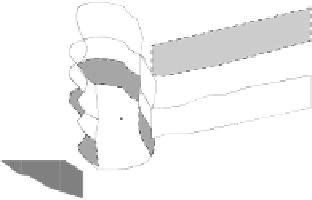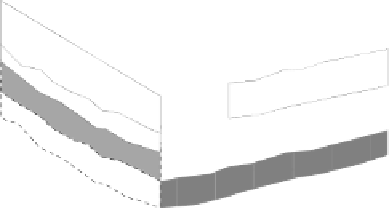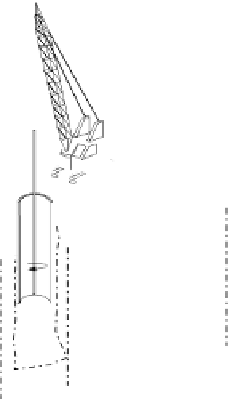Environmental Engineering Reference
In-Depth Information
The processes of solidification and stabilization can be applied under off-site and
in situ
conditions. Under off-site conditions the polluted grounds are excavated,
examined and then homogenized before being introduced into a mixer where they
are mixed with the stabilizing agent, additives and other chemical reagents. When
completely mixed, the treated grounds are discharged from the mixer and become a
solidified mass with a significant compressive strength, high stability and rigid
texture similar to that of concrete.
The current methods of solidification and stabilization
in situ
generally use
mechanical mixers. Although these methods are advantageous and profitable,
stricter conditions are increasingly required to obtain a more homogenous mixture of
waste simultaneously combined with the treatment and collection of dust and
organic vapors. According to the application, drilling machines of mechanical
mixture or high-pressure jets can be used to inject the reagents in order to modify
the properties of waste. An important advantage of this method is the possibility of
treating the ground without excavation or folding back the nappe. The two most
common variations of the method based on the use of drilling machines are the
shallow mixture of the grounds and deep mixture of grounds (see Figure 15.3).
Figure 15.3.
Drilling with mixture of the grounds
The shallow mixture technique is typically used with depths ≤10 m by using
drilling machines with large diameters (1-4 m). The deep mixture technique is used
at depths up to 35 m; in this case, (two to eight) drilling machines of smaller
diameters (0.8-1.0 m) are used. The drilling machine consists of a cylinder with a







































































































































































































































































































































































































































































































































































































































































































































































































































































































































































































































































































































































































































































